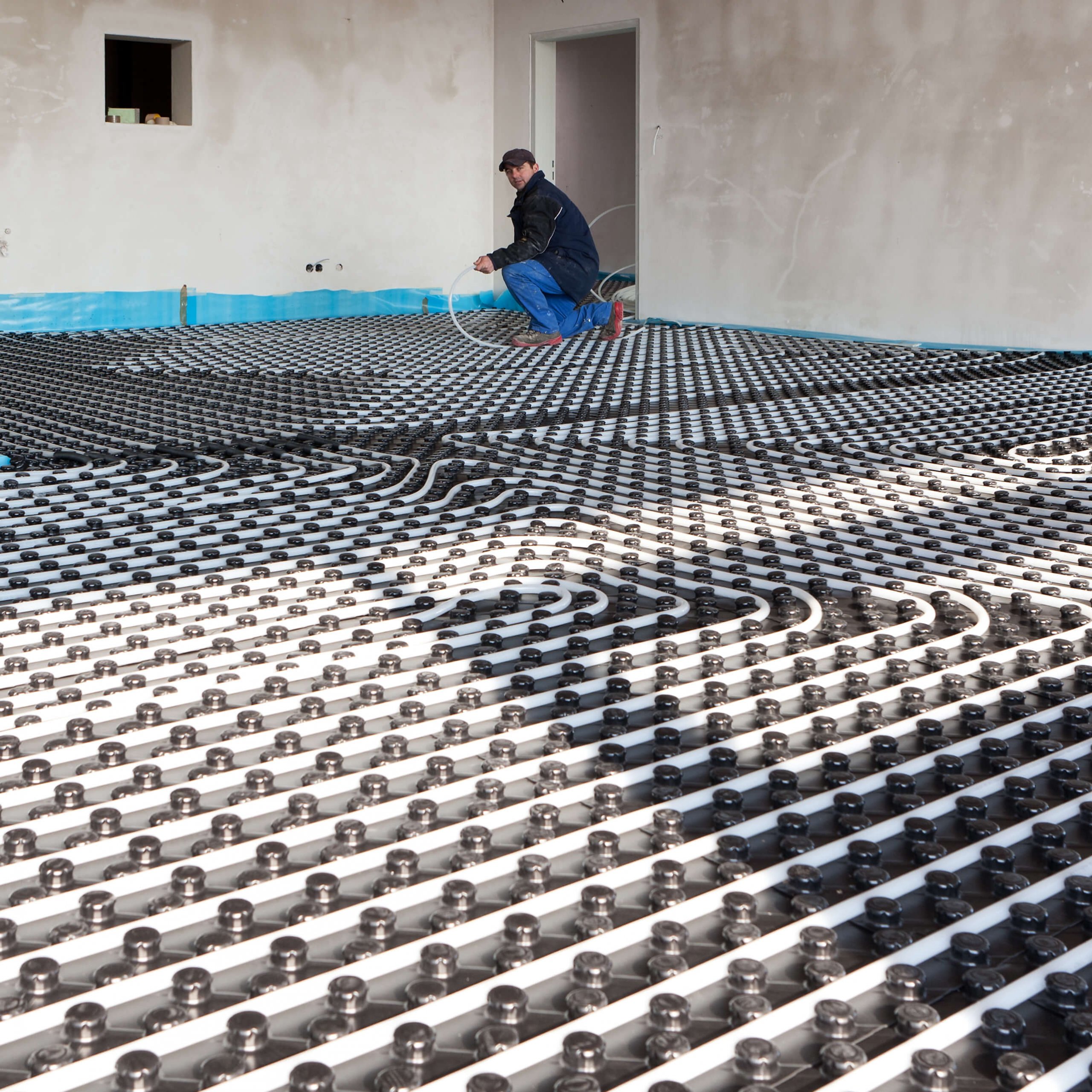
Two ¾ inch polyethylene pipes are inserted into the 150-foot borehole. Each borehole would be separated from the next by about 10 feet.

The vertical loop would involve vertical boreholes 4 inches in diameter drilled about 150 feet each. All parallel trenches are connected to a supply and return header that enters the house through the basement to the geothermal flow center. The minimum distance between each channel is about 15 feet. If a horizontal loop system were installed, it would involve the excavation of parallel trenches, each 5 feet deep and 3 feet wide and about 130 to 150 feet long. Heat is extracted from the ground during the winter, or heat is discharged to the earth during the summer air conditioning season by one of four types of installations. The sun shining on the earth warms the ground to maintain a relatively constant temperature of about 8 degrees Celsius year-round in southern Ontario at a depth of 5 to 6 feet. Call us and we can answer your questions and get you going with a geothermal system.A geothermal system can also heat water. The team at Comfortworks want you to experience geothermal radiant/pool heating for your home. Call Us for Geothermal Radiant/Pool Heating The installation cost was $4,000 and operating costs of $2,800 per year! The geothermal water-to-water system had an upfront cost of $13,000 for this installation, but operating costs were now $450 a year! Saving $2,350 a year in operating costs the system will pay for itself in less than 4 years. In a recent installation, a homeowner was considering using a gas boiler to heat his pool/spa.

During late fall, winter, and early spring seasons the water-to-water system is fully capable of heating both the pool and spa, however, homeowners typically choose to only heat their spa during these times. All summer long, and into early fall, the system will maintain the pool/spa heating in this way. If additional heating is needed, the water-to-water system will start its compressor to satisfy requirements. Of course extra heating will be needed during cooler seasons of the year when it is not feasible to use the heat of the home, this is accomplished through the water-to-water system during these seasons at extremely high efficiency levels.Įssentially, in the late spring as you start to air condition your home, the automatic three-way valve will divert the heat gathered from your home and send it to the pool/spa ("free heating"), once temperature is satisfied the three-way valve will then send it to the ground loop system. These systems supply heat to a pool/spa in the most unique and energy efficient way by utilizing a three-way valve to direct heat gathered from the home and diverting it to the pool/spa for essentially "free" heating. Geothermal water-to-water ground source heating equipment can also be used for the heating of pools. The feeling of warmth coming from the floor and the fact no air is circulated in the home gives a feeling of comfort that is truly unique in comparison with traditional systems. The pump will automatically adjust its RPM's depending on how many zones are calling for heat, reducing pumping power requirements for the system.Īlthough geothermal radiant/pool heating systems do cost more to install, homeowners say it is worth every penny and they will never go back to a forced air system. Automatic zoning valves simply turn on/off each zone of the home and a variable speed pump is used to increase energy savings of the system. Typically the home is zoned into 3-4 areas, each with its own thermostat controlling the radiant floor heat system. In most applications, the water-to-water unit is connected to a buffer tank, where hot water is stored, and the radiant system pulls hot water from this tank to heat the floors of the home. Homes that also need cooling require a separate water-to-air geothermal system with dedicated ductwork for cooling.

Radiant floor heat systems typically operate 10% to 20% less than forced air systems and lead to substantial energy cost savings. The distribution of heat not only provides better comfort, but also reduces heat loss, since hot air is not rising above occupant level, and therefore lowers the temperature difference at the ceiling. These systems involve supplying heat directly to the floor of the home using hot water circulating through tubing in the slab. Radiant floor heating is the most popular hydronic application using ClimateMaster water-to-water ground source heating equipment. Geothermal Radiant/Pool Heating technology can be applied to distribution systems other than forced air ducted systems.


 0 kommentar(er)
0 kommentar(er)
